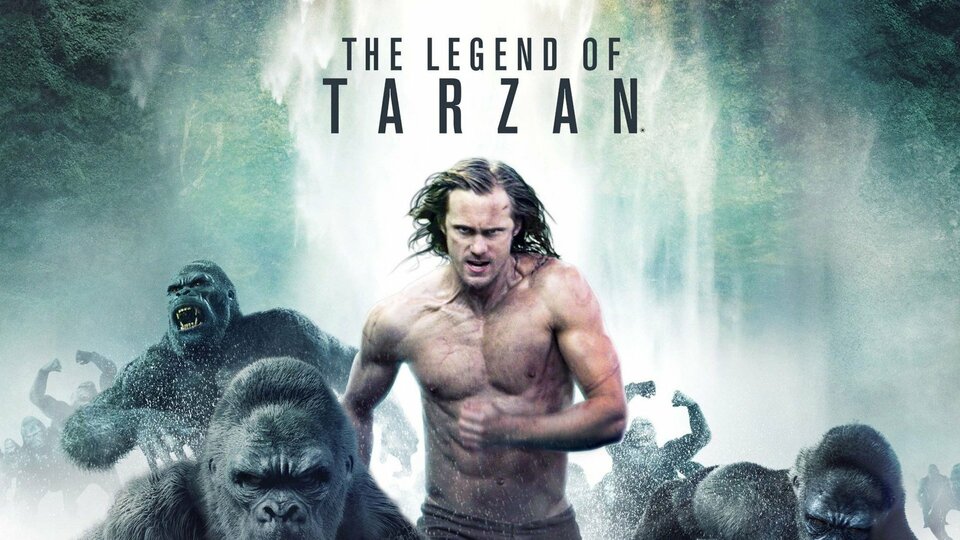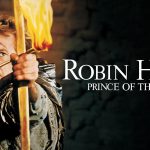🦍 The Legend of Tarzan (2016) – Human by birth. Ape by upbringing.

Related movies:
Related movies:
Related movies:
🦍 The Legend of Tarzan (2016) – A Wild Return to the Jungle
In 2016, Warner Bros. Pictures brought audiences back to the heart of Africa with The Legend of Tarzan, a sweeping action-adventure film that reimagined the iconic tale for a modern audience. Directed by David Yates, best known for his work on the Harry Potter franchise, the film set out not to retell Tarzan’s well-worn origin story, but to explore what happens after the “happily ever after.”
This time, we meet Tarzan not as the feral child of the jungle, but as John Clayton III, Lord Greystoke—a man attempting to reconcile two worlds: the civilized society of Victorian England and the wild, untamed landscape of his youth. It’s a bold narrative shift that gives the film a unique perspective, blending classic mythology with a new, politically charged story of exploitation, identity, and rediscovery.

A Tarzan for a New Era
For over a century, Tarzan has been a fixture of popular culture. From Edgar Rice Burroughs’ original novels to countless films, radio dramas, and cartoons, the story of the boy raised by apes has fascinated audiences worldwide. Yet, many past adaptations leaned heavily on spectacle, often ignoring deeper themes.
The Legend of Tarzan takes a different route. Rather than focusing solely on Tarzan’s upbringing, the film asks: What happens when the King of the Jungle is forced to live as a man of society? Can he ever truly leave the wild behind?
Alexander Skarsgård embodies this duality perfectly. As John Clayton, he is refined, controlled, and almost restrained—yet beneath the surface lurks the primal energy of Tarzan, ready to burst forth when called upon. Skarsgård’s physical transformation for the role was staggering, as he underwent a grueling training regimen to capture Tarzan’s legendary strength and agility. His portrayal humanizes the character without stripping away the mythic aura that has defined him for decades.
The Story – A Call Back to the Congo
Set in the late 1800s, the film opens with Tarzan and Jane (Margot Robbie) living peacefully in London. But peace never lasts long. When the British government invites John Clayton to return to the Congo, ostensibly as a trade envoy, he reluctantly accepts. What he doesn’t realize is that he is being lured into a trap.
The villain behind this scheme is Captain Léon Rom, played with chilling precision by Christoph Waltz. Rom, an envoy of King Leopold II of Belgium, represents the ruthless colonial exploitation that plagued Africa during this era. His plan is to deliver Tarzan to a tribal chief in exchange for diamonds, securing both wealth and power.
As Tarzan returns to the land of his birth, he reconnects with his animal instincts and the people he once ruled alongside. But this is no mere homecoming—Jane is kidnapped, entire tribes are threatened, and the balance of the jungle itself hangs in jeopardy. To prevail, Tarzan must rediscover the raw, untamed strength that once defined him, proving that no matter how far he strays from the jungle, it will always be a part of who he is.

Jane: More Than a Damsel
One of the film’s strongest elements is its reimagining of Jane Porter, played by the always captivating Margot Robbie. Unlike earlier depictions, where Jane often existed as little more than a helpless companion, this version of Jane is fiercely intelligent, independent, and unafraid to challenge both Tarzan and his enemies.
Robbie infuses Jane with agency and courage, ensuring that she is never reduced to a passive character. While she does fall into danger, her resilience and resourcefulness allow her to shape her own fate, reinforcing the film’s message that strength comes in many forms.
A Companion in the Fight
Adding a unique dimension to the story is George Washington Williams, portrayed by Samuel L. Jackson. Based on a real historical figure—an American soldier, minister, and journalist—Williams serves as both comic relief and moral compass. His presence grounds the film in historical context, as he uncovers the atrocities of colonial exploitation and slavery occurring in the Congo.
Jackson’s dynamic performance balances humor and gravity, making him the perfect foil to Tarzan’s stoic demeanor. Together, they form an unlikely but compelling partnership, reminding audiences that the battle is not only physical but ideological.
Themes – Nature, Identity, and Colonialism
At its core, The Legend of Tarzan is more than just an action film. It’s a story about identity, belonging, and the clash between human greed and the natural world.
The film does not shy away from addressing the darker realities of the 19th century, particularly the brutal colonization of Africa under King Leopold II. By weaving historical elements into the narrative, the film elevates itself beyond pulp adventure, encouraging viewers to reflect on the exploitation of both land and people.
Moreover, Tarzan’s journey mirrors humanity’s eternal struggle between civilization and nature. His ability to navigate both worlds suggests that true strength lies not in choosing one over the other, but in finding balance between them.

Visuals and Action – The Jungle Comes Alive
Visually, The Legend of Tarzan is stunning. Shot on lush backdrops and enhanced with cutting-edge CGI, the film brings the African jungle to life in breathtaking detail. From sweeping aerial shots of rivers and mountains to intimate close-ups of wildlife, the film captures both the grandeur and the danger of the wild.
The action sequences are equally impressive. Tarzan’s battles against man and beast are choreographed to highlight his unique abilities—his agility, strength, and uncanny connection to animals. Standout moments include his breathtaking swing through the treetops, his showdown with a ferocious gorilla, and the climactic battle on the river, where Tarzan rallies the animals of the jungle against Rom’s forces.
Performances that Elevate the Story
-
Alexander Skarsgård delivers a powerful, physical, yet deeply human performance as Tarzan, blending raw strength with emotional vulnerability.
-
Margot Robbie redefines Jane as a courageous and intelligent partner, refusing to be sidelined.
-
Christoph Waltz is chillingly effective as Rom, his calm demeanor masking ruthless ambition.
-
Samuel L. Jackson injects humor and heart, creating one of the film’s most memorable dynamics.
Together, the cast elevates the material, transforming what could have been a simple action spectacle into a story with genuine emotional weight.

Reception and Legacy
Upon its release, The Legend of Tarzan received mixed reviews, with some critics praising its ambition and visuals while others felt it struggled under the weight of its serious themes. However, audiences appreciated its fresh approach to the Tarzan legend and its willingness to tackle deeper issues.
Over time, the film has gained recognition as a bold reimagining of the classic tale—one that respects the myth while offering a modern, socially conscious perspective.
Conclusion – The Call of the Wild
The Legend of Tarzan (2016) is more than just another jungle adventure. It’s a story of love, courage, and the eternal bond between man and nature. By focusing on Tarzan’s life after the jungle, the film gives us a hero who is not defined solely by his past, but by the choices he makes when faced with new challenges.
In a world where the natural environment continues to face threats, Tarzan’s struggle resonates as both timely and timeless. The jungle called—and he answered.











